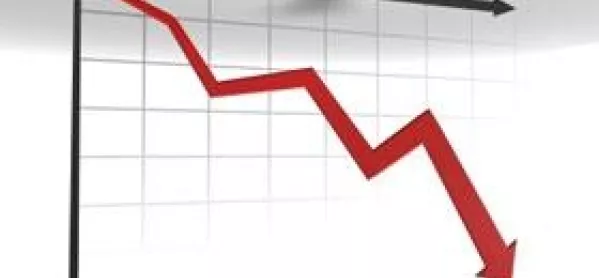End of ‘boom years’ sounded

Teacher numbers, pay and pensions will come under closer scrutiny than ever before, as a series of relentlessly gloomy forecasts on the state of public finances came tumbling out this week.
Early signs of teacher unrest have also emerged, with a threat of industrial action if the new curriculum is not properly funded. This coincided with a warning from the head of the inspectorate that teachers would have to “think creatively” about how to implement the reforms in the absence of new resources.
The developing crisis was top of the agenda this week when Education Secretary Fiona Hyslop met the Association of Directors of Education in Scotland at their annual get-together behind closed doors in Dunkeld.
A string of presentations to Holyrood’s finance committee on Tuesday pointed to the inescapable conclusion that the “boom years” of funding for education and other services were over. The general view was that things could not go on as before and there had to be different ways of doing them, including charging for services or sharing of functions (councils in the west of Scotland are already in discussion about joining forces in education).
One analysis suggested that the belt-tightening around the public sector could last until the 2030s, as a combined result of last week’s UK Budget, the global financial crisis and historically high levels of public spending in Scotland.
The Centre for Public Policy for Regions (CPPR), based at Strathclyde and Glasgow universities, made the prediction of a 20-year funding squeeze. It calculates that Scottish Government spending is likely to decline in real terms by between pound;2.1 billion (the most optimistic figure) and pound;3.8bn (in the most pessimistic scenario) from 2009 until 2014.
John McLaren, an economist with the CPPR and a former adviser to the previous Scottish Labour ministers, said these cuts of 7 to 13 per cent in public services over the next five years were bad enough, but the prospects after that were “not good”. Growth in real terms was unlikely to be very large, “possibly not until the 2030s”.
The CPPR has also predicted that in the ensuing four years up to 2018, the Scottish Government’s spend might only grow by 1 per cent per annum. That contrasts with an average 6 per cent growth in the Scottish budget each year between 1999 and 2008.
The think-tank warned that cherished policies might have to bite the dust, including free tuition fees and the council tax freeze.
But it is clear other areas of spending are at risk too. A paper to the Parliament’s finance committee from John Aldridge, who was director of finance at the former Scottish Executive, pointed out that local government (which runs schools) accounts for a third of the Scottish Government’s Pounds 30bn expenditure - and that pay accounts for up to 70 per cent of that spending.
He added that the existing “efficiency savings”, under which public services in Scotland have to reduce spending by 2 per cent a year (pound;1.6bn from 2008-11), will become more challenging if they are continued and “to find more will normally require radical changes to the way services are delivered”.
The point was reinforced by Jenny Stewart, head of infrastructure and government for Scotland at KPMG, who told MSPs: “Given the state of the public finances over the next five to ten years, we can no longer afford the level of spending increases that we have enjoyed over the last ten years.”
Ms Stewart and Mr Aldridge suggested that services may need to be prioritised and funded accordingly - education versus justice, for example. Ms Stewart noted that “only a limited percentage of Scottish Government funding has been formally evaluated for its effectiveness”.
A longer-term problem was raised by the Government’s actuary department which called for a close eye to be kept on public sector salaries, including those of teachers, in order to minimise pension costs. The employer’s contribution to the Scottish Teachers Superannuation Scheme, which is counted towards government spending, rose from 13.5 per cent to 14.9 per cent this month. The pressure on the fund will increase as pensioners live longer.
Meanwhile, the war of words between the SNP and Labour continued this week, as Scottish Ministers blamed UK chancellor Alastair Darling for making the situation worse than it need be in last week’s budget. The SNP accused Mr Darling of imposing spending reductions in Scotland amounting to pound;500m in 2010-11, while Labour claimed that the Scottish budget would grow by pound;2.2bn between now and 2011.
Keep reading for just £1 per month
You've reached your limit of free articles this month. Subscribe for £1 per month for three months and get:
- Unlimited access to all Tes magazine content
- Exclusive subscriber-only stories
- Award-winning email newsletters

